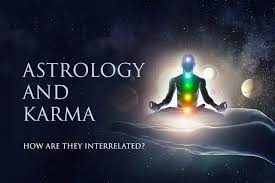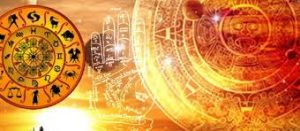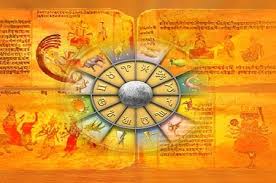Indian astrology and the karma theory are deeply intertwined, reflecting the philosophical and spiritual aspects of life in the Indian tradition. Together, they offer insights into human existence, destiny, and the consequences of actions.
- Indian Astrology (Jyotish Shastra)
- Karma Theory
- Connection Between Astrology and Karma
- Practical Example
- Philosophical Outlook
- 1. Karmic Planets and Their Influences
- 2. Remedies for Balancing Karma Through Astrology
- 3. Aligning Free Will with Cosmic Energies
- Practical Example
- Philosophical Perspective
- 1. Planetary Indicators of Karma
- 2. Karmic Lessons Through Chart Placements
- 3. Example: Rahu and Ketu in Karmic Scenarios
- 4. Daily Practices to Balance Karma
Indian Astrology (Jyotish Shastra)
Indian astrology, rooted in the Vedic scriptures, is a system that studies celestial influences on human life. It operates under the belief that the positions and movements of planets, stars, and the Moon at the time of an individual’s birth define their personality, choices, and destiny.
The core of Indian astrology involves:
- Natal Chart (Janam Kundali): A chart created based on the precise time, date, and place of birth. It maps planetary positions and forms the foundation for predictions.
- Nakshatras (Lunar Mansions): The division of the sky into 27 Nakshatras, which influence characteristics and behaviors.
- Dashas (Planetary Periods): Vimshottari Dashas analyze the influence of specific planets during different periods of life.
- Houses (Bhavas): The 12 houses of a natal chart represent various aspects of life, including career, relationships, and spirituality.
Indian astrology is not just predictive; it’s deeply philosophical and aims to help individuals align their actions with cosmic energies.
Karma Theory
The karma theory, central to Indian philosophy, states that every action (karma) has consequences, either immediate or unfolding over time. Karma operates under the law of cause and effect—good actions lead to positive outcomes, while negative actions result in challenges or suffering.
Key Principles of Karma:
- Sanchita Karma: The accumulated karma from all past lives.
- Prarabdha Karma: The portion of past karma being experienced in the current life.
- Kriyamana Karma: The karma being created through actions in the present life.
- Agami Karma: Future karma that will arise from present actions.
The karma theory emphasizes that while some life circumstances are predetermined (Prarabdha), free will exists, enabling individuals to shape their future through conscious actions (Kriyamana).
Connection Between Astrology and Karma
Indian astrology integrates the karma theory by interpreting a person’s natal chart as a reflection of their past karmic influences. The planetary positions and their interactions indicate the karmic lessons and challenges a person must face in this lifetime.
For example:
- Saturn (Shani): Often associated with discipline and lessons, Saturn’s placement in a natal chart might indicate areas where past actions require resolution.
- Rahu and Ketu (Lunar Nodes): These are directly linked to karmic patterns. Rahu represents desires and challenges stemming from past karma, while Ketu signifies spiritual growth and lessons learned.
Astrology offers guidance on how individuals can navigate life while balancing the karmic debts and credits reflected in their chart.
Practical Example
Imagine a person whose natal chart shows Saturn prominently placed in the 10th house, linked to career. This might indicate that their professional life is influenced by karmic debts—perhaps struggles due to past actions. By embracing patience, hard work, and ethical conduct, they can work through their karmic challenges and ultimately achieve growth.
Philosophical Outlook
Indian astrology and karma theory emphasize the interconnectedness of the cosmos, human actions, and destiny. They guide individuals toward self-awareness and the realization that while destiny shapes certain aspects of life, free will allows them to evolve spiritually and create positive impacts.
By understanding astrology and karma, individuals can align their lives with higher cosmic principles, improve their decision-making, and ultimately find balance and purpose.
1. Karmic Planets and Their Influences
Certain planets play a significant role in revealing and addressing karmic patterns in Vedic astrology. Here’s a breakdown:
- Saturn (Shani):
- Known as the “Lord of Karma,” Saturn represents discipline, delays, and lessons. Its position shows areas where karmic debts need to be repaid through perseverance and ethical actions.
- Example: If Saturn is in the 7th house (relationships), it may indicate struggles in partnerships due to karmic ties, requiring patience and maturity to resolve.
- Rahu (North Node) and Ketu (South Node):
- Rahu reflects unfulfilled desires and challenges rooted in past lives, while Ketu signifies spiritual growth and lessons learned.
- Example: Rahu in the 10th house may create an obsession with career achievements, while Ketu in the 4th house shows past-life mastery of domestic harmony.
- Jupiter (Guru):
- Jupiter represents wisdom and blessings. It often mitigates negative karma and provides opportunities for growth and expansion.
- Example: Jupiter aspecting the Sun can indicate spiritual enlightenment and success in leadership roles as a reward for good karma.
2. Remedies for Balancing Karma Through Astrology
Astrology provides practical remedies to harmonize the effects of planets and reduce karmic burdens. Common methods include:
- Mantras: Reciting specific mantras for planets (like the Saturn mantra “Om Sham Shanicharaya Namah”) can help balance their energy.
- Gemstones: Wearing gemstones associated with planets (e.g., blue sapphire for Saturn or emerald for Mercury) strengthens positive influences.
- Charity and Service: Performing charitable acts related to planetary significances (e.g., donating black sesame seeds for Saturn) helps resolve karmic debts.
- Meditation and Spiritual Practices: Meditating on Rahu and Ketu’s energies can help transcend material desires and focus on spiritual growth.
- Rituals and Puja: Conducting rituals or pujas dedicated to planets ensures their blessings and reduces obstacles caused by karmic influences.
3. Aligning Free Will with Cosmic Energies
While the karma theory acknowledges that some life events are predetermined (Prarabdha Karma), it also highlights the importance of free will (Kriyamana Karma). Astrology serves as a guide, showing the cosmic map of karmic debts and credits, and empowers individuals to make mindful choices that lead to positive outcomes.
For instance:
- If a chart reveals challenges in the career sector due to Saturn, the individual can proactively focus on hard work, honesty, and patience to mitigate negative effects.
- If Rahu indicates obsession with material gains, the person can balance it through detachment and spiritual pursuits.
Practical Example
Let’s say an individual’s chart shows Rahu in the 5th house (creativity and children). This could indicate karmic challenges around creative expression or parenthood. To balance Rahu’s influence:
- They can engage in creative pursuits with mindfulness, avoiding impulsive or ego-driven actions.
- Regular meditation and chanting Rahu mantras can help channel its energy positively.
Philosophical Perspective
The integration of astrology and karma theory teaches that life is a journey of spiritual evolution. By understanding planetary influences and taking conscious actions to resolve karma, individuals can align with their higher purpose, ultimately achieving balance and inner peace.
1. Planetary Indicators of Karma
Each planet plays a unique role in influencing various aspects of life. Here’s a detailed look:
- Sun (Surya):
Represents self-esteem, authority, and soul purpose. A weak or afflicted Sun may indicate unresolved karmas related to ego, fatherly figures, or leadership.- Remedy: Offering water to the rising Sun or chanting the Gayatri Mantra can strengthen the Sun’s energy.
- Moon (Chandra):
Governs emotions, mind, and maternal energies. Challenges like emotional instability or strained relationships with the mother may reflect past-life karmas.- Remedy: Donating white items like rice or milk on Mondays helps pacify the Moon.
- Mercury (Budha):
Influences communication, intellect, and business. A weak Mercury might suggest karmic lessons tied to dishonesty or lack of education.- Remedy: Feeding green fodder to cows or wearing emerald gemstones helps enhance Mercury’s strength.
2. Karmic Lessons Through Chart Placements
- 12th House (House of Moksha):
Indicates karmic debts and spiritual liberation. A strong 12th house suggests the resolution of karmas, while malefic placements may bring foreign settlements, isolation, or financial losses linked to karmic lessons. - Saturn in the 8th House:
Brings intense transformation and karmic obstacles, often related to inheritance or secrets. This placement may also guide individuals toward spirituality.
3. Example: Rahu and Ketu in Karmic Scenarios
Let’s take an example:
- If Rahu occupies the 1st house (self-identity) and Ketu the 7th house (relationships), the individual may experience challenges with self-confidence and marriage. This is often due to past-life excessive reliance on relationships at the expense of personal growth.
- Remedy: Practicing mindfulness, chanting Rahu and Ketu mantras, and fostering independence help balance this energy.
4. Daily Practices to Balance Karma
- Meditation:
Regular meditation helps focus the mind and understand karmic patterns revealed by the natal chart. - Acts of Service:
Serving the less fortunate, donating, or volunteering fulfills planetary karmic obligations. - Self-Reflection and Ethical Living:
Understanding the significance of karmic lessons and choosing compassionate and mindful actions shape future karma positively.




